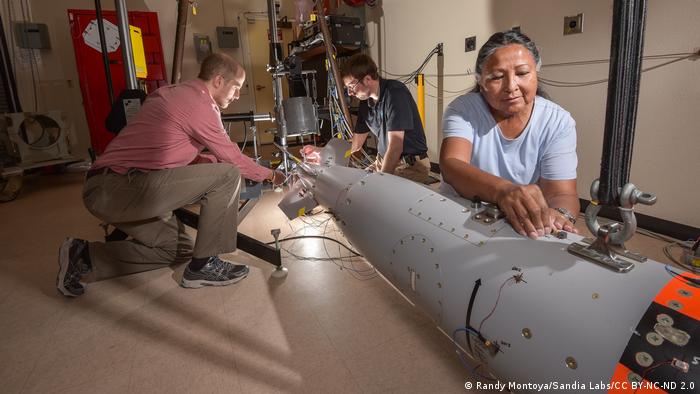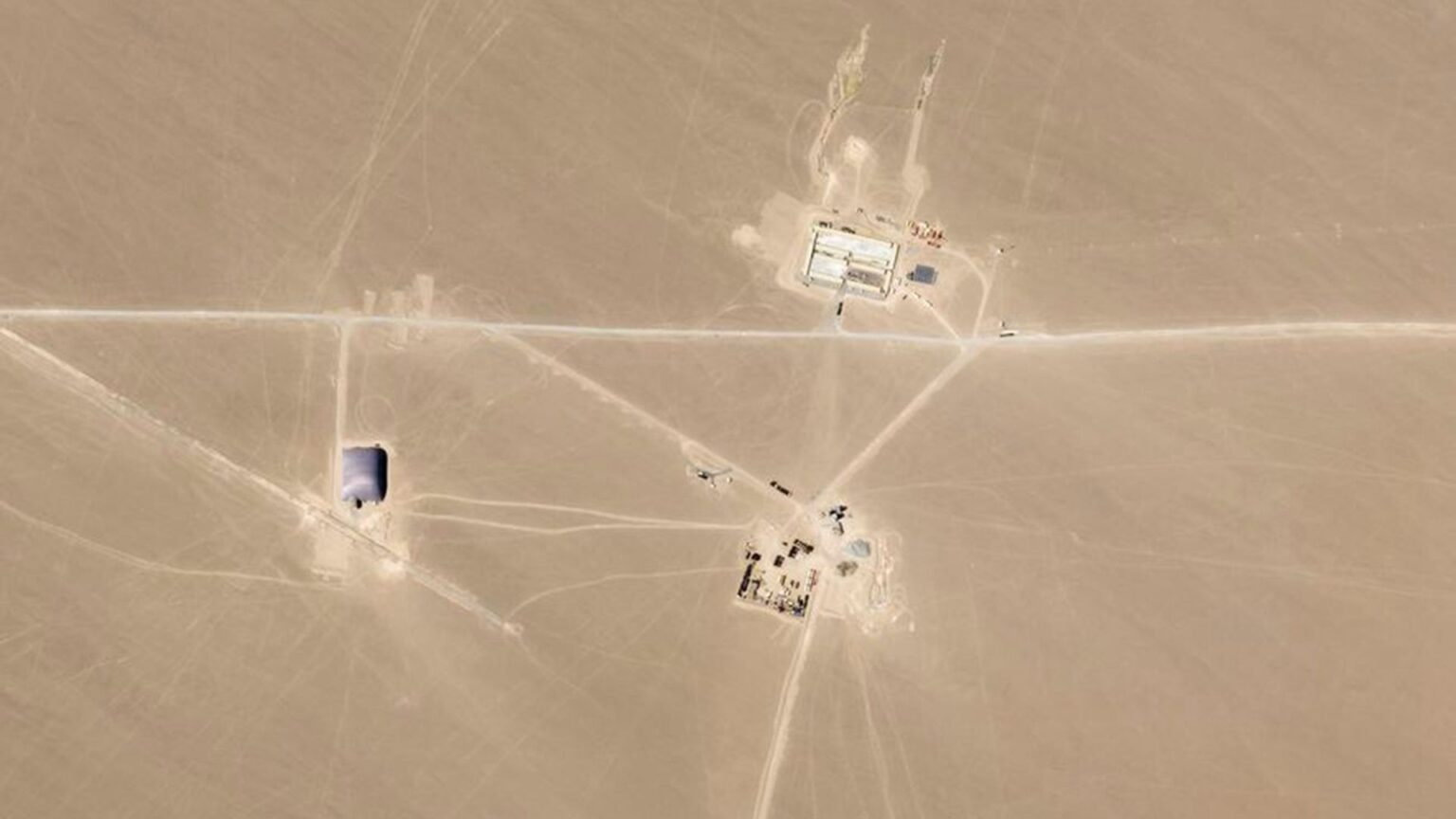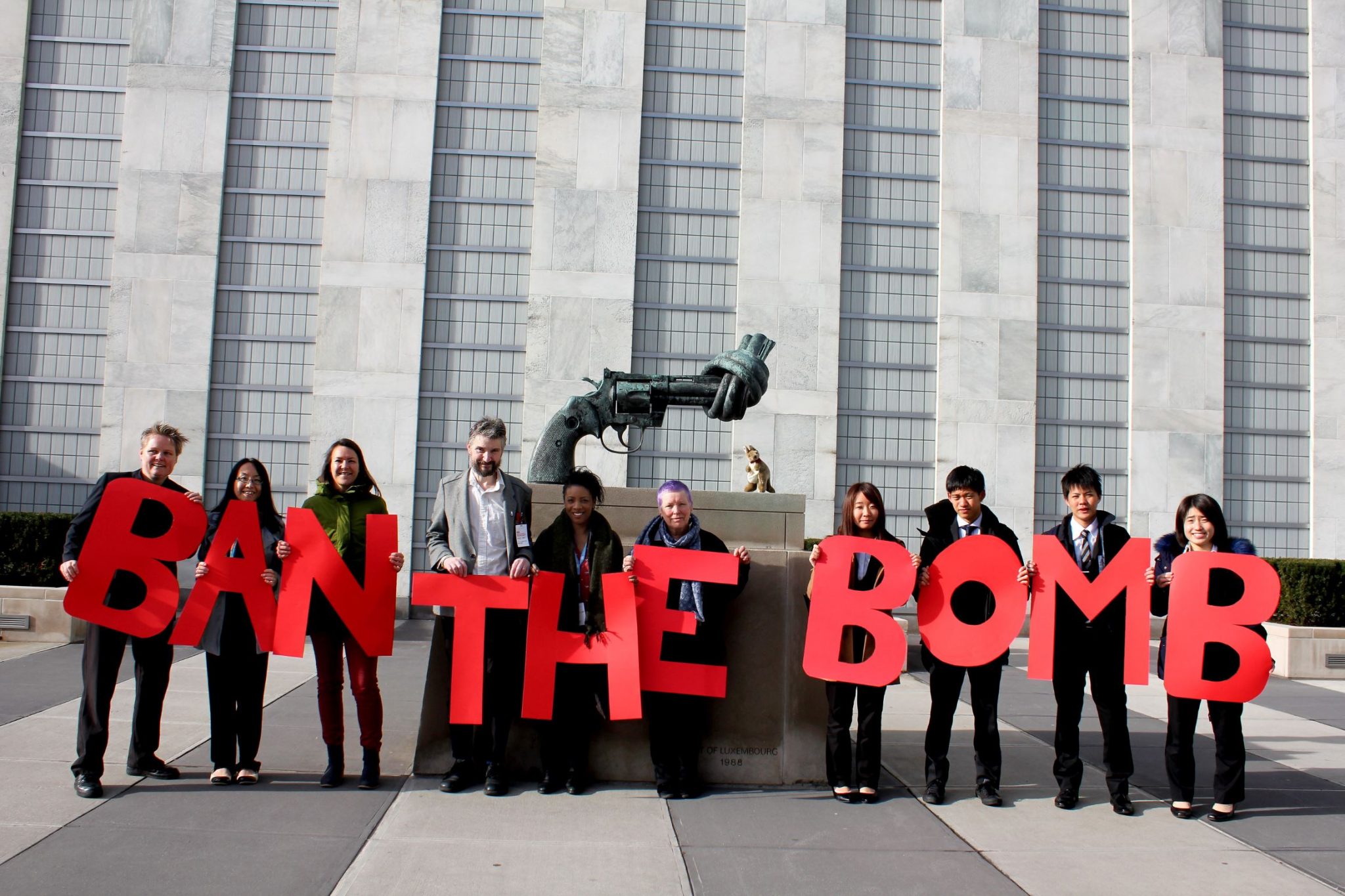https://www.globalsecurity.org/wmd/world/china/images/df-17-image12.jpg
SIPRI Warns of a New
Worldwide Nuclear Arms Race
Deutsche Welle
(June 13, 2022) — Every Tuesday, Rüdiger Lancelle gets into his car and drives to the Bundeswehr air base in Büchel in western Germany. The 83-year-old peace activist sits down on a camping chair in front of the gate and holds a vigil. His goal: “That the weapons lying in Büchel get removed and be scrapped,” he tells DW on the phone.
About 20 nuclear bombs are stored in Büchel and would be deployed by German fighter pilots in the event of an attack. Lancelle protests against this so-called “nuclear sharing.”
Peace activist Rüdiger Lancelle
Just six months ago, it looked as if peace activists like Lancelle had most Germans on their side. A “Germany free of nuclear weapons” had also been set as a goal of the new government by the center-left Social Democrats, environmentalist Greens, and neoliberal Free Democrats. After the Russian attack on Ukraine and nuclear threats from Moscow, that now seems to be water under the bridge.
In a recent survey commissioned by the public broadcaster ARD, 52% of those polled said they were now in favor of keeping the US nuclear weapons in Germany. Over 1,300 people were polled from May 30 to June 1. In a similar survey a year ago, the figure was just 14%.
Are Germans learning to love the bomb? To Lancelle, it feels that way: “I always put a chair next to my chair to invite people to talk. But so far, no one has come to say: yes, you’re right.”
New Weapons for the Nuclear Arsenal
Starting in 2023, the nuclear weapons in Büchel are to be replaced by the new B61-12 model. This modern bomb can not only be guided to the target, but also has a variable yield ranging from 0.3 to 340 kilotons (the “Fat Man” bomb dropped on Nagasaki was 25 kilotons). Critics fear that this variability could lower the inhibition threshold for actually using this weapon.
The US is spending about $10 billion to modernize its nuclear bombs. Germany, for its part, is investing billions of euros in new F-35 jets to carry them.
The trend is general, according to the Stockholm International Peace Research Institute (SIPRI), which on Monday published a major report, warning of a new nuclear arms race.
It found that after decades of nuclear disarmament, all nuclear powers are currently spending a lot of money on new nuclear warheads and associated delivery systems, such as long-range missiles, ships, submarines, and aircraft.
SIPRI researcher Hans Kristensen and his colleagues have spent years estimating the nuclear weapon inventories of the world’s nuclear-armed states. The current total is understood to be 12,705, with over 90% owned by Russia and the United States.
“[Nuclear states] are super busy modernizing their arsenals”, Kristensen, who is also director of the Nuclear Information Project at the Federation of American Scientists, told DW. “Both to extend the versions they have, but also to introduce new kinds. Countries are beginning to adhere more importance to nuclear weapons.”

A model of the B61-12 bomb during tests at Sandia Labs
China Wants to Join the Top Nuclear League
One country, in particular, stands out: China. “The Chinese increase is the most significant buildup in the world right now in terms of numbers,” said Kristensen. “It’s completely unprecedented by Chinese standards. We don’t know why China is doing this for the simple reason that China doesn’t want to talk about it.”
In the past two years, Kristensen and his colleagues have identified some 300 newly built silos for ballistic missiles in Chinese deserts from satellite imagery. “Perhaps China fears that its existing arsenal would not survive a US nuclear strike,” Kristensen says. “Maybe it’s also a reaction to the fact that missile defense systems will be better in the future and China wants to be able to overcome such systems with more warheads.” In any case, he said, one thing is certain: President Xi Jinping wants a “world-class” army — and that apparently means one that is nuclear-armed.

Satellite images show what may be an ICBM silo in China
New Risks
That’s why it would be important to commit China to a maximum number of nuclear weapons with international treaties, Kristensen says. “However, the Chinese have not been interested so far. They have rejected the proposals.”
Soon, the US and Russia won’t have to stick to limits either. That’s because the “New Start” agreement — the “Strategic Arms Reduction Treaty” — expires in 2026. Of what was once a comprehensive system of arms control treaties, “New Start” is the only remaining element. It limits the number of strategic nuclear weapons such as long-range missiles. “Given Russia’s Ukraine war and the evolution of the Republican Party in the US, a successor agreement is unlikely,” Kristensen believes.
That is why a new nuclear competition between China, Russia and the United States seems likely. “And then we have the very dynamic new nuclear weapons countries like India, Pakistan and North Korea,” Kristensen said. The risk of nuclear war is thus much higher than it was a decade ago, he added. “We are living in a new era of nuclear risk.”

These risks are currently being described in particularly graphic terms on Russian state television. “If everything continues as it is, only a few mutants will survive in Lake Baikal,” presenter Vladimir Solovyov said on Channel Russia-1 recently. “The rest of the world will go down in a massive nuclear strike.”
A world free of nuclear weapons is therefore likely to be a very distant prospect. This is also clear to Lancelle, the German peace activist. “Yes, it’s like tilting at windmills,” he says. As a Christian, however, he says he is obliged to advocate nonviolence. “I know no other weapon than prayer.”
That’s why Lancelle wants to continue sitting outside the gate in Büchel in his protest against nuclear weapons — quietly, and probably alone.
Posted in accordance with Title 17, Section 107, US Code, for noncommercial, educational purposes.

